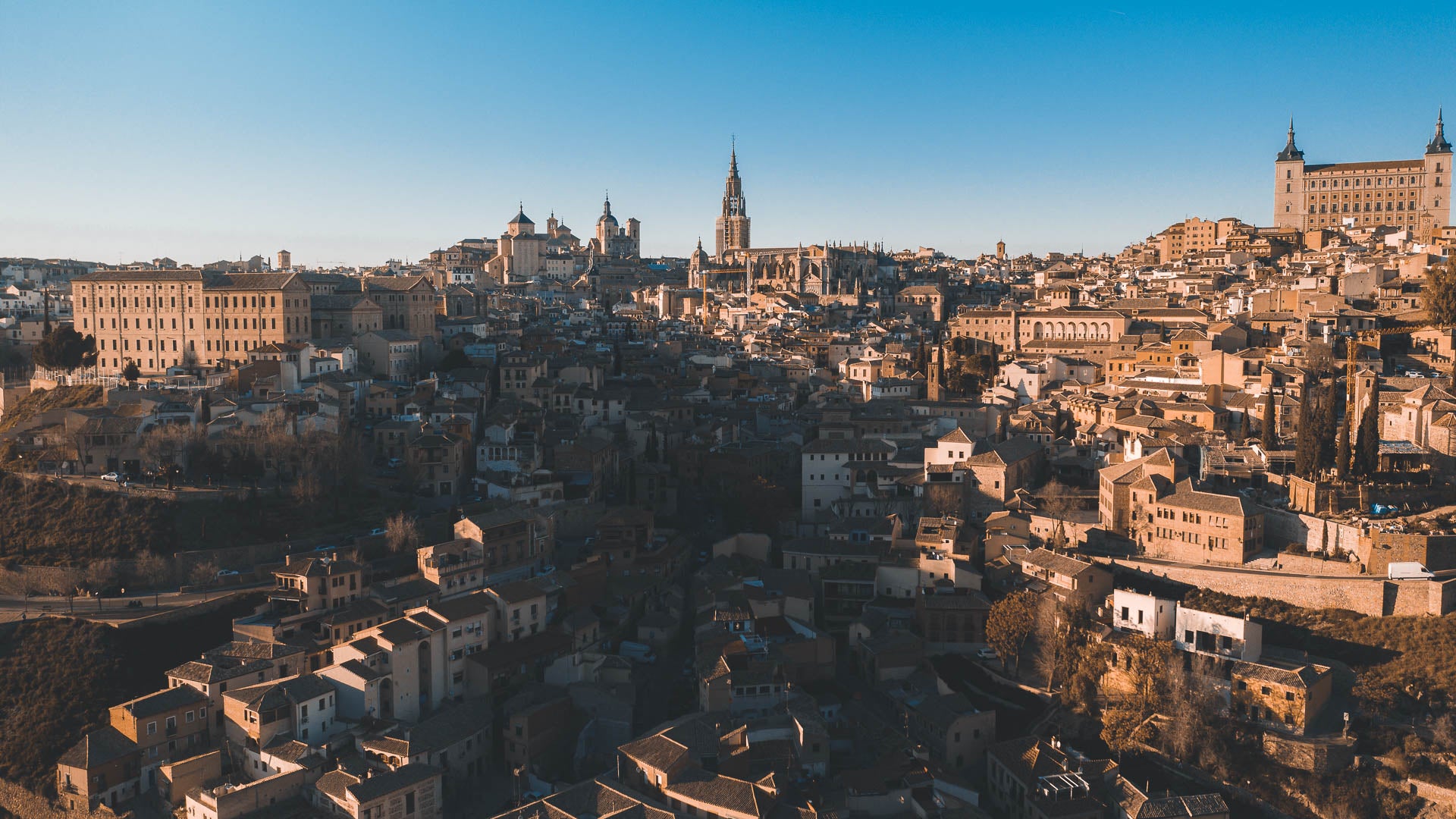An introduction into exposure and the exposure triangle.
New to Photography? Read about the three pillars of the exposure triangle individually; Shutter speed, Aperture, and ISO.
Back in the old days, where cameras made cool robotic noises and had reels of film inside them, to even see a picture, you had to take them to a darkroom to get them “exposed”.
That meant that the film had some kind of image on it and there was a lengthy process in which it was transferred onto a piece of photographic paper in a dimly lit room, dipped in developer solution, and progressively, it would reveal the actual image that was taken.
In the digital age, while we no longer have this darkroom process, the rest of the process still holds - we take exposures. Every time we click the shutter button, we’re making an exposure. All that has changed is that we now see the image (the exposure) in real-time thanks to technology.
So in today’s world, when we take away all the automatic smarts we have; when we decide not to use our smartphones or stop using cameras on Auto mode, manually, how do we make an exposure? And how do we make a good one?
In this article, I’ll cover the basics at a high level, but getting good at exposing your images correctly is more a matter of experience, getting out there and just doing it, rather than it is a classroom exercise.
But first, what is the “perfect exposure”?
Well, simply, it’s one where you can see everything properly. Ha. It’s one where the dark parts and the bright parts are in “balance”, so to speak - the dark parts aren’t too dark, the bright parts aren’t too bright.
What the perfect exposure looks like is ultimately is up to you to decide - how dark or bright an image is. But to get us started, let’s begin with something all cameras have; a built-in exposure meter. This is a sliding scale, usually between -3EV to +3EV (exposure value).
When it’s at 0, that’s what the camera thinks is the “perfect exposure”; the most balanced one. So for now, let’s aim for that.
The exposure triangle - Shutter speed, Aperture, ISO

Shutter speed, Aperture, and ISO. These are the three things you need to master for snapping the perfect exposure every time. They’re known as the exposure triangle, and you’ll eventually become very familiar with it.
All three of these controls independently manipulate the amount of light (the amount of darkness or brightness) that eventually makes its way onto your camera sensor and makes the exposure.
“Stops” of light
We measure this amount of light in a funny unit name called “stops”. Yes, as in “stops of light”.
We don’t have to dive into the technical details of why it’s called “stops” right now, all you need to know is that we need a common unit of measure and a common name for measuring light so that we can talk about it consistently. Photography is, after all, all about light.
Shutter speed, Aperture, and ISO all have their own equivalent “stops” of light, even if the way you control them is different. This will make more sense in a moment.
Generally, the game of the exposure triangle is one of give and take. Depending on the scene you’re trying to shoot in and the available ambient light, when you want to “give” one corner of the triangle a stop of light, you have to “spend” it from another. It’s a balancing game that requires a bit of practice to become fast at, but will eventually become second nature, don’t worry =).
I’ll also give you the order of operations in which to think about when exposing your images a little later on in the article, but for now, let’s get a baseline understanding of Shutter speed, Aperture, and ISO.
Shutter speed

Shutter speed is the most important part of the exposure triangle, and one of the most important things to master in all of photography. Spend a lot of time understanding it, because even outside the exposure triangle, your shutter speed affects everything in your image.
As it relates to the exposure triangle though, here are some basics:
- The lower (or slower) your shutter speed (e.g: 1/15sec), the more light you let in.
- The higher (or faster) your shutter speed (e.g: 1/1000sec), the less light you let in.
- Quite literally, every time you press the shutter button, a shutter flap goes over your sensor, flaps open to reveal it and exposes the image quickly, and quickly closes it back up again. This super quick flash of light is your exposure.
- A stop of light is measured in time.
Shutter speed stop examples
1/1000 of a second - 1/500sec - 1/250sec - 1/125sec - 1/60 - 1/30 - 1/15 - 1/8 etc.
Aperture

You know how when you look at the sun, you naturally squint your eyes because it’s too bright? You know, there’s too much sun and you need less of it. Well, that’s your eyes compensating, and that’s a lot like how Aperture works.
Essentially, it’s the hole at the end of your lens that the light passes through to reach the shutter and then the sensor.
By changing this value, you’re adjusting the size of the hole. The smaller the hole, the less light comes through. Makes sense, right?
We use Aperture for a great many things, such as depth of field, lighting effects like sun stars, hyper-focal distancing, zone focusing in Street Photography, and a bunch more.
But as it relates to the exposure triangle and understanding exposure, all you need to know is:
- The higher the number (e.g. F16), the smaller the hole and the less light you let in.
- The lower the number (e.g. F2.8), the larger the hole and the more light you let in.
- Quite literally, changing the Aperture is adjusting the size of the hole in your lens.
- A stop of light is a measure of that diameter, known as a unit called “f-stops”.
Aperture stop examples
F22 - F16 - F8 - F5.6 - F4 - F2.8 - F2 - F1.4
The bigger the number (like F22), the smaller the hole - counter-intuitive, I know.
ISO

ISO is a term that comes from the film days, referring to how sensitive a piece of film would be when it’s exposed to light. For now, that’s not important, because the digital version of what ISO is today, although conceptually similar, is not the same.
The ISO determines how sensitive the sensor should be when taking your exposure, so it’s useful to think about ISO as your volume dial. Essentially what you’re doing with ISO is changing the amount of “gain”, or the amount of “power” you send to your sensor to make it more or less powerful. So once you have your settings dialled in (Shutter speed and Aperture), you decide whether the volume is good, and then you take the exposure.
ISO, in general, is not as big of a determining factor as Shutter speed or Aperture, and it certainly has a higher degree of fail-zone if you don’t get it right. But for reasons such as grain, dynamic range, laziness etc. that we’ll get into in a different article, the ISO setting should be set last, after your Shutter Speed and Aperture are adjusted.
ISO stop examples
ISO 100 - ISO 200 - ISO 400 - ISO 800 - ISO 1600 - ISO 3200 - ISO 6400 - ISO 12800
“Stops” of light - Revisited
Okay, let’s pause here for a minute and reflect on our idea of these “stops of light”.
In each of the stop examples for Shutter Speed, Aperture, and ISO, I’ve given specific numbers that all represent one stop of light in their respective settings.
Of course, depending on your camera, you’ll almost certainly have numbers that fall between these when you go and twist those dials - that’s totally okay. The numbers that fall between the numbers that I’ve given are partial stops of light, usually referred to in thirds (e.g. one and two thirds). Feel free to shoot wherever you like with these settings, but eventually, you should try to remember where the clear delineations between each stop of light for each respective setting lie.
Give and take
The reason for this is because of the give and take idea I mentioned before. In any given scene, there’s a finite amount of light. To expose your image correctly, you need first to weigh up what you want your end result to be, and whether you need to prioritise Shutter Speed or Aperture for your image.
Some example scenarios will showcase what I mean:
Scenario 1

You’re shooting a human. Usually, humans move. Your hand moves. Everything moves. Therefore you need a Shutter Speed that’s fast enough to compensate for this movement, one fast enough so that the end picture isn’t blurry. A Shutter Speed of 1/1000sec might be fast enough for this, so that’s your main priority.
However, when you adjust your Shutter Speed to 1/1000, if everything is in Manual mode (and chances are you’ve been shooting slower than this), you’ll see that your picture suddenly becomes darker; why? Well, if your shutter speed was previously set to 1/250, for example, that’s two stops of light you’ve lost (because 1/500, then 1/1000 are the next stop increments). So your image will be two stops underexposed, and your in-camera meter should tell you that too.
To solve this problem, you’ve got to get two stops of light from somewhere else to compensate. So if you’re lucky to have lenses that can have smaller f-stop numbers, perhaps you can change your Aperture from F8 to F2.8 (because F4, then F2.8 are the next increments). Doing so will even out the exposure again, and now you’re neutral. Yay.
But you could also solve this problem by perhaps getting one stop of light from ISO and one stop of light from Aperture. Whatever mix is up to you.
Scenario 2

You’re shooting a landscape. Thankfully, landscapes don’t move. And luckily, you have your camera on a tripod. Suddenly, camera shake isn’t a problem any more because, well, you’re not holding your camera. Neat.
What this then allows you to do is have a much, much lower shutter speed, because there’s no camera shake. You could, potentially, photograph a landscape at 1/30sec, which is five stops different from our last scenario. You decide that this is a good idea. So you do it, and now everything is overexposed and white.
So, you can again, dial-up your Aperture and decide to make it smaller by going from F2.8 to F22, which is 5 stops less light than our previous example, but now, our relationship between Shutter Speed and Aperture has balanced out five stops either way.
We can leave our ISO at 100 now because that’s awesome. And bam, you’ve nailed your shot.
Note You should seldom shoot in F22 unless you really want starbursts, but even then I wouldn’t recommend it. F22 causes diffraction and other more technical problems we’ll get into in a different article.
Now that we’ve got a little bit more of an understanding about the give and take relationship here, it’s almost time to head out into the field and test that for yourself.
But first, think about this:
Exposure workflow
This is the mental checklist I recommend you think about before taking any picture.
- What is the lowest Shutter Speed I can get away with in order to execute my intent? Do I want a blurry shot? Do I want it tack sharp? Is there a compromise in between?
- How much depth of field does this scene require? What’s the largest Aperture I can get away with?
- Now, do I have enough light with those settings? Do I need to adjust my ISO to expose the image correctly?
With all of these choices comes a tablespoon full of salt; there are a lot of creative decisions to be made here, and we’ll dive into Shutter Speed, Aperture, and ISO in-depth individually in the future, but for now, think of them in this order and practice making perfect exposures every time.
tl;dr
The exposure triangle is an abstract idea where each corner of the triangle independently controls the final exposure of your image.
Each corner of the triangle is controlled by Shutter Speed, Aperture, or ISO, and while they operate independently and each corner has repercussions that extend past just regular exposure, they also work together to level out your image correctly.
The exposure triangle is the critical concept to understand in Photography, as every image you capture will use it. Eventually, it will become second nature and you’ll be shooting perfectly exposed images with perfect settings without even thinking.



